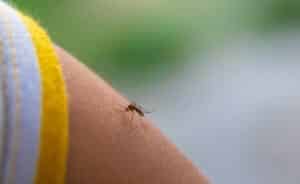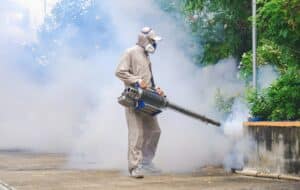Alabama’s warm, humid climate provides an ideal breeding ground for a diverse population of mosquitos, with over 60 species thriving across the state. These pesky insects are a persistent challenge for residents and visitors alike. From wetlands teeming with life to bustling urban areas offering oases of water, mosquitos have adapted to a wide range of habitats, making their control a complex issue. A comprehensive understanding of their life cycle and behavior is essential for implementing effective prevention and control strategies.
Habitat and Life Cycle

Mosquitos exhibit a remarkable adaptability, thriving in various environments. Wetlands, marshes, and swamps offer abundant breeding sites with stagnant or slow-moving water. However, these insects are not confined to rural areas. Urban settings provide numerous opportunities for mosquito proliferation, with discarded tires, clogged gutters, and even small containers holding rainwater serving as breeding grounds.
The mosquito life cycle involves four distinct stages: egg, larva, pupa, and adult. Females are responsible for laying eggs, often in batches of hundreds, on the water’s surface or on objects just above the waterline. These eggs can survive in dry conditions for weeks, waiting for favorable conditions to hatch. Once submerged in water, the eggs hatch into aquatic larvae. The larvae are active feeders, using tiny mouthparts to filter microorganisms from the water. They breathe through air tubes located at the end of their abdomens, requiring them to come to the water’s surface regularly. After several molts, the larvae mature into pupae. The pupae are less active than the larvae and do not feed. They develop further, with adult body parts forming inside their casings. Finally, the adult mosquito emerges from the pupal case, ready to take flight and feed.
Stage
Egg
Larva
Pupa
Adult
Description
Laid by female mosquitos, often in batches of hundreds, on the water’s surface or on objects just above the waterline. These eggs can survive in dry conditions for weeks.
Aquatic feeders that use tiny mouthparts to filter microorganisms from the water
Dangers of Mosquitos
Beyond their irritating bites, Alabama mosquitos pose a significant threat to public health. As vectors for a variety of dangerous diseases, these insects can cause severe illness and even death. The state’s warm climate, combined with abundant standing water, creates optimal conditions for mosquito-borne diseases to flourish. Understanding the risks associated with mosquito bites is crucial for protecting oneself and the community.
Common Diseases Spread by Mosquitos
Several mosquito-borne diseases are prevalent in Alabama, with West Nile virus being one of the most common. This viral infection can cause a range of symptoms, from mild flu-like illness to severe neurological complications, including meningitis and encephalitis. While less common, Zika virus poses a significant threat to pregnant women, as it can cause microcephaly and other serious birth defects in developing babies. Eastern Equine Encephalitis (EEE) is a rare but potentially fatal disease that affects both humans and animals. It can cause inflammation of the brain (encephalitis), which can lead to permanent neurological damage or death.
Disease
West Nile Virus
Zika Virus
Eastern Equine Encephalitis
(EEE)
Description
A viral infection that can cause a range of symptoms, from mild flu-like illness to severe neurological complications, including meningitis and encephalitis.
A viral infection that can cause microcephaly and other serious birth defects in developing babies.
A rare but potentially fatal disease that affects both humans and animals. It can cause inflammation of the brain (encephalitis), which can lead to permanent neurological damage or death.
Mosquito Control Strategies
First and foremost, yard maintenance is key. At the top of any list of yard mainteanance items is stagnant water. 100 mosquitoes can hatch in 1 teaspoon of water. Think about that. Within 8-12 days those mosquitoes are breeding and biting adults. Eliminating stagnant water is the first step in reducing the mosquito population in your yard. Here’s are a few areas we commonly find water in yards –
Children’s toys
Flower pots (without drain holes)
Clogged gutters
Uneven ground and depressions in yard
Improper drainage
Wheelbarrows
Buckets
Boats that aren’t covered
Sagging boat and furniture covers
Take a few minutes after rain showers to ensure you’ve emptied as much standing water in your yard as possible.

Next, the use of mosquito traps and repellents are excellet supplements to yard maintenance and spray services. Products such as Thermacell mosquito repellers and the mosquito traps we offer are avenues to a more comfortable outdoor experience. Our mosquito traps are designed to destroy both the adult who enters and the larva she leaves behind. An added benefit is a “domino
effect” as every other water source with which the mosquito comes in contact is also contaminated with a biocide. This results in more mosquitoes and larva being contaminated and destroyed.
Finally, call us. We offer safe pesticidal AND all natural oil solutions the affect and/or repel mosquitoes. A regular schedule of spraying the area of your yard where mosquitoes eat, rest, and breed can reduce the mosquito population by up to 80%. These services combined with the reduction of stagnant water will ensure your family is much better protected and able to enjoy time outside.


